Berry propagation company Van der Avoird in Molenschot, the Netherlands, has recently opened a new facility. They are showcasing some new techniques in their facility, such as a Caeli-ventilation unit and a vertical propagation system. Join us as we take a look inside the company.
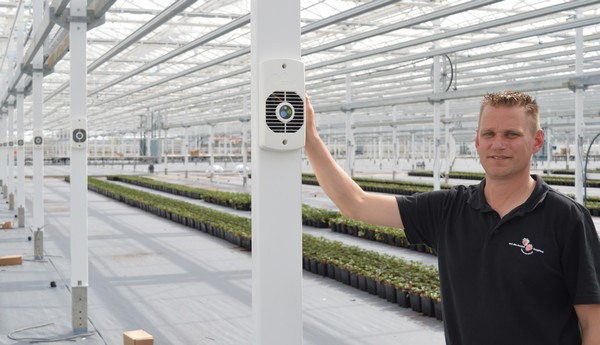
Jurgen with a Caeli ventilation unit and some of the first plants.
Fewer locations
On an existing tray field at the Rimpelaar in Molenschot, Van der Avoird Trayplant cleared all strawberry plants, making room to construct a new greenhouse and a shed against the existing shed 0.5-hectare glass greenhouse. Additional land was purchased for strawberries and raspberries to avoid losing tray space.
The company aims to eventually work with fewer locations, as this is advantageous for the company, enabling the optimization of business processes. Scaling up facilities also offers opportunities for more automation and mechanization.
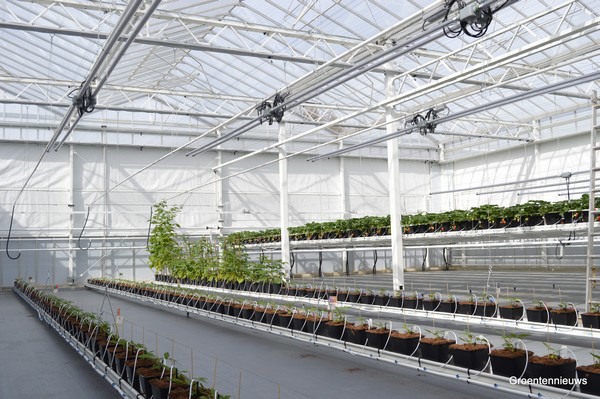
In the demonstration greenhouse, many different varieties of strawberries and raspberries are grown.
Testing
Before entering the new shed and greenhouse, we first visit another new facility: the demonstration greenhouse. Previously, one tunnel greenhouse for strawberries and one for raspberries were used. Since last year, the company has had a glass greenhouse demonstrating the latest techniques. In week 14, the first strawberries were harvested in the greenhouse, where raspberries are also grown. The harvested product is sold to the catering industry, but that is not the company's only goal with their demo greenhouse. "Here, we want to test cultivation recipes," Jurgen explains. "We have our own ideas about this and want to show what is possible." Jurgen can't tell much else about it yet. "When we have results, we will definitely share them."
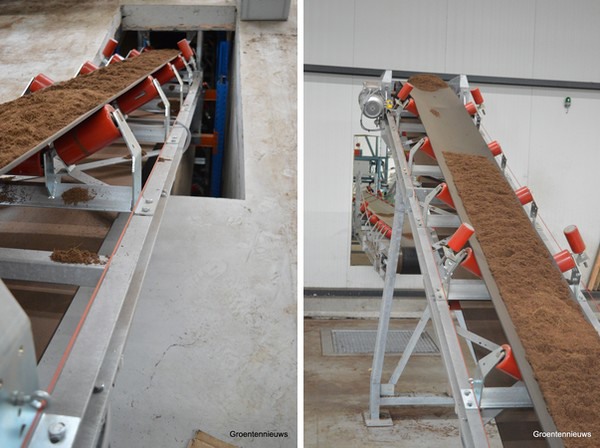
The potting soil system transports soil through an underground tunnel.
Underground
On our way to the warehouse, Jurgen tells us that there will be solar panels on the roof, like the ones they already have on the water basin. Inside the warehouse, a special potting soil system immediately catches the eye. Or rather, it doesn't, given that an essential part of the system is underground. On one side of the shed is the soil bunker, from where the soil is transported over two lanes to the other side, where the trays are filled. "With one belt, the soil is brought in, and dirty soil is taken out with the other belt," Jurgen explains.
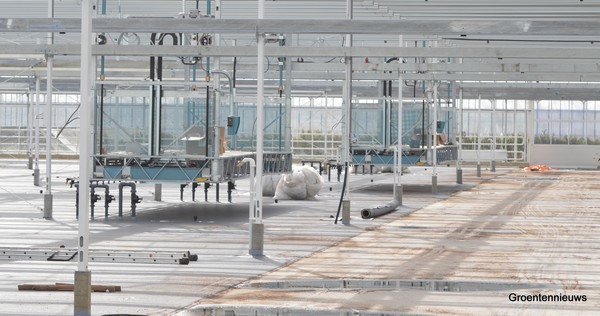 Automation and mechanization aim to have as little movement as possible in the greenhouse. Soon, four carts will run along the center aisle.
Automation and mechanization aim to have as little movement as possible in the greenhouse. Soon, four carts will run along the center aisle.
Two-layer cultivation
The new greenhouse is designed for two-layer cultivation. "In this way, we can guarantee continuity in the cultivation," says Jurgen. There is room on the floor for tray plants and on the gutters for strawberry plants to take cuttings from. A so-called Achterbosch system will soon be moving through the greenhouse. This machine, designed for internal transport, will have several functions. Jurgen: "The machine takes care of crop protection, irrigation, both horizontal and vertical use of biostimulants, and it is also a work platform. Some of our colleagues have a similar system up and running. So it's not entirely new, but it is to us."
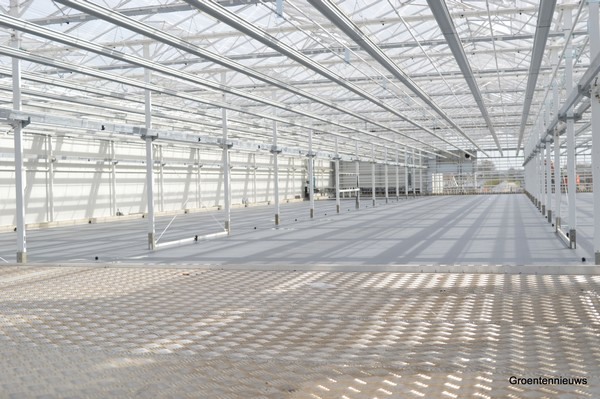
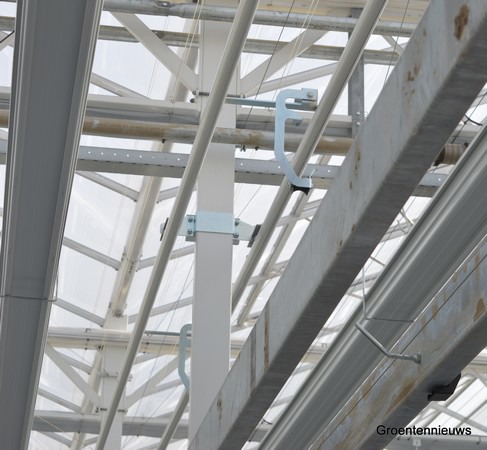
Fan Unit
One of the new techniques Van der Avoird will be employing is the Caeli fan unit. An innovation the growers came across through greenhouse builder Van Amelsvoort. Convinced of the "pretty simple idea" that "no one had ever thought of before," Van der Avoird Trayplant decided to offer itself as a pilot site. "We are going to test the units on a large scale," Jurgen adds.
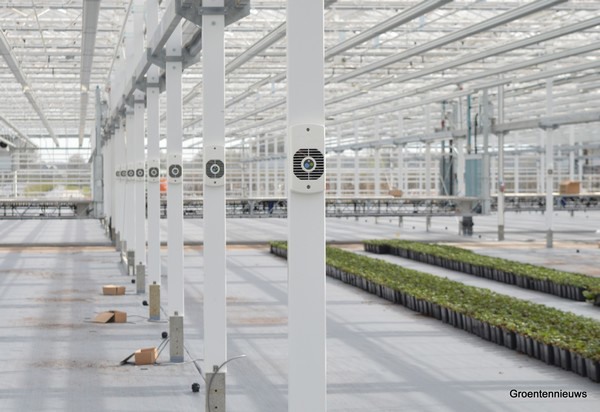
Higher 24-hour temperature
In the greenhouse, equipped with a thermal system, the grower wants to achieve a high 24-hour temperature. "Certainly a few degrees higher than we achieve at our main location." The greenhouse fan units, integrated into the greenhouse columns, have an essential role to play in this. The units must be used to achieve the required air movement. Moreover, using the units provides accurate insight into the greenhouse climate through a heat map. "We want to achieve a certain energy input for a more homogeneous climate with little to no gas consumption."
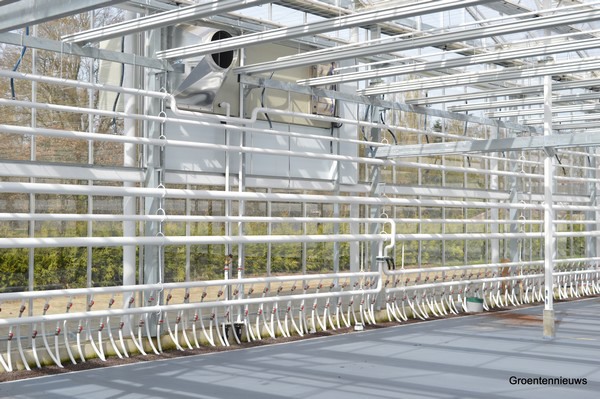
The thermal heating system heats the greenhouse bottom-up.
Spectrum selection
Inside the greenhouse, we also encounter air treatment units on the side walls to dehumidify the air, a system from Technokas. "With the screens closed, the humidity in the greenhouse rises, and then you want to be able to dehumidify," Jurgen explains. Speaking of screens, Van der Avoird just had three installed. A radiation and energy screen on one wire bed and a separate blackout screen. The purpose of the screen is to prevent light from reaching their neighbors. The greenhouse also contains hoistable LED lighting. "With hoistable LED lighting, we prevent shadowing in our two-layer cultivation."
What stands out is the spectrum choice. There is no purple glow in the greenhouse when the lights come on but white light. "Our owner Peter chooses this because of the environment, for whom purple light can be annoying. These Luminaid fixtures provide white light, which is also nicer to work with for the people in the greenhouse. Although, in our opinion, the difference between this spectrum and purple for plant growth is not that big."
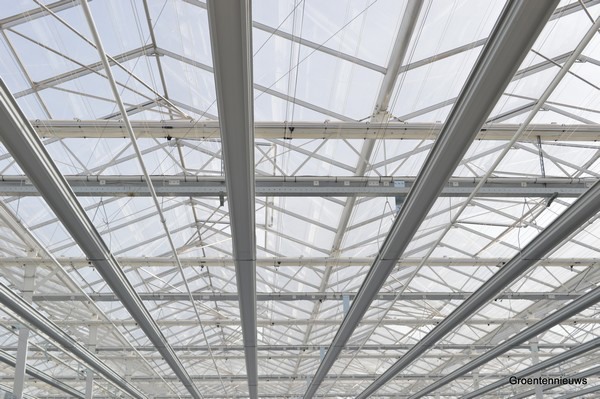
In total, three screens were installed.
Bringing the plant to the worker
From the greenhouse, we walk through a four-layer cultivation system. We pass by the 'old greenhouse', where raspberry cuttings are cut, which is quite labor-intensive. "It really is handiwork," Jurgen agrees.
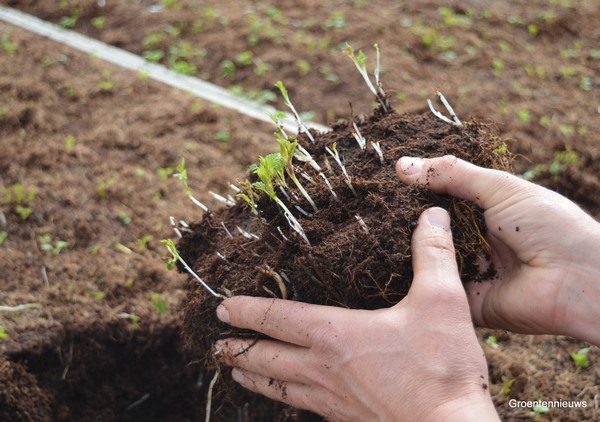
Little raspberry seedlings.
“The new system allows our staff to work from one place, as they won't have to walk between the plants. It will bring the cultivation blocks to the people."
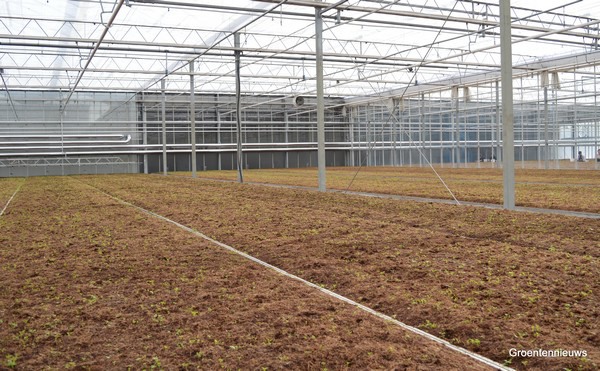
The old greenhouse.
Climate cells
Via the potting soil system, the substrate for the blocks is applied and leveled off entirely automatically. From there, the blocks enter the climate cell, which is actually a "semi-climate cell", says Jurgen. "We need 25% of the energy input of a normal greenhouse. We use heat and cold very efficiently. I don't know many systems quite like this."
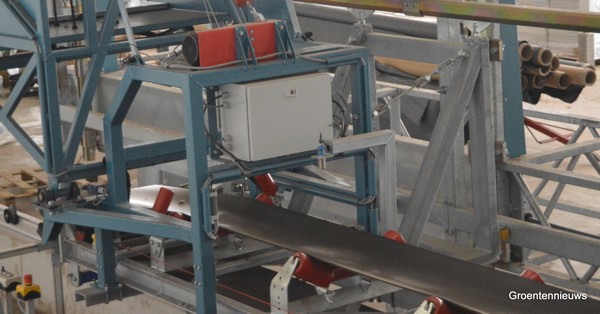
In this machine, the substrate is applied.
In the cell, growers work with two layers above and two layers below them. "Each layer has to pass by the people doing the cuttings once a day," he says.
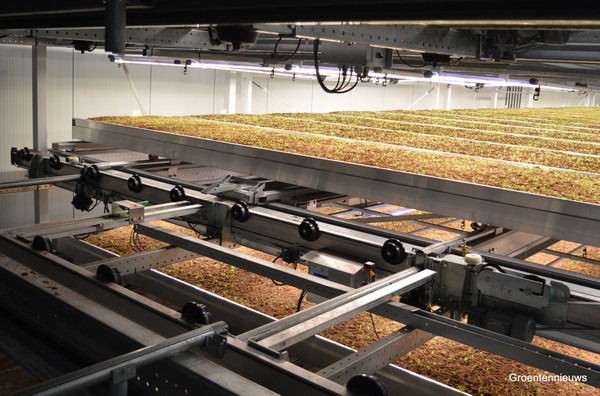 The multilayer system.
The multilayer system.
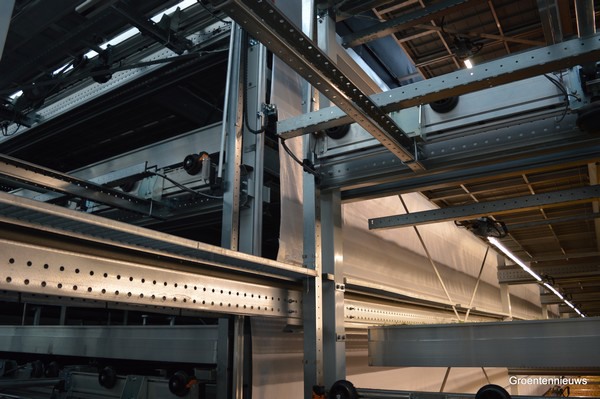
On one side, it is 'night'. On the other side, 'day'.
Thermal Power Plant
Jurgen explains that this thermal installation differs from the one at the main site. "Here, we work based on simultaneity, which means we can heat and cool simultaneously, allowing for a higher power of efficiency." Soon the plant will be up and running.
"Commissioning at the start of the cooling season is most efficient, as there is no heat in the ground yet then." Jurgen refers to the wells drilled into the ground, two for heat and two for cold. The wells are 80 meters deep. "Very different from just any old sprinkler well," he points out. "It's full of sensors, and everything is strictly secured." The winter of 2022-2023 will be the first major test for the installation. "Only in extreme weather should we need gas," he says.
Ultrafiltration
Further on in the installation room, we encounter another novelty: an ultrafiltration unit. This system was invested in after participating in the Recupa project. "Ultrafiltration is temperature-independent and, in addition, it requires less space than slow sand filtration. Only when it is cold in winter does it become more difficult." The picture below shows that the ultrafiltration unit is lined up with the daily filter in the foreground, which Jurgen calls "a big hot tub". Here coarse dirt, mainly potting soil, is filtered out of the water. This is followed by purification using a glass filter, after which the ultrafiltration unit from supplier Turbin does the rest. "What is essential is good pre-filtration. We've seen that in the Recupa project."
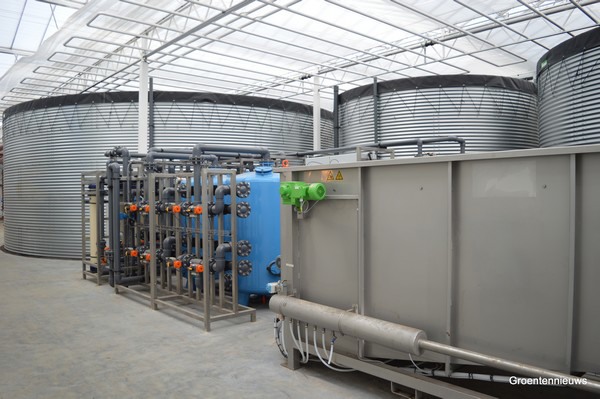
Three filtration plants in a row, on the far left the ultrafiltration, in the foreground 'the big hot tub'.
For those who would like to see the facility in person, the company will open its doors to the public on June 25.
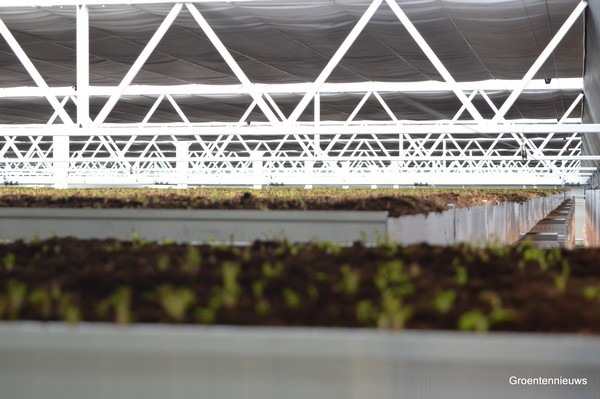
Inside the climate cell.
For more information:
Van der Avoird Trayplant
Rimpelaar 3
5124 RB, Molenschot, Netherlands
0161 451 427
info@trayplant.nl
www.trayplant.nl
